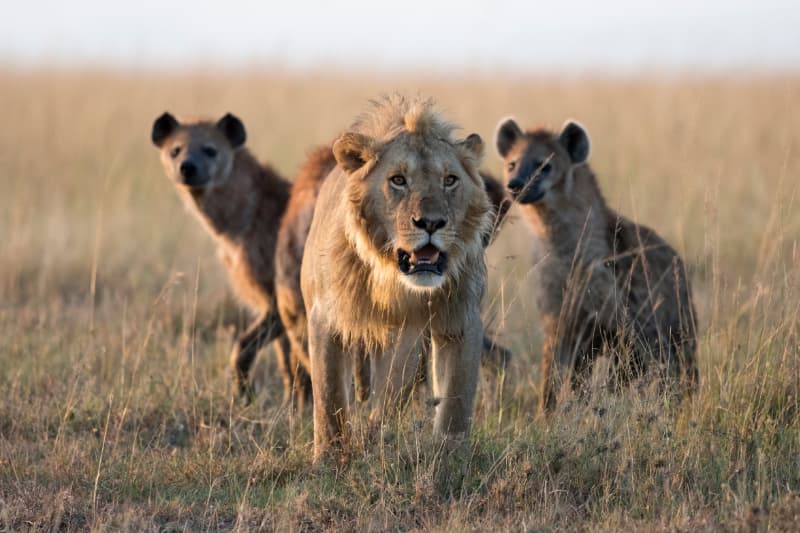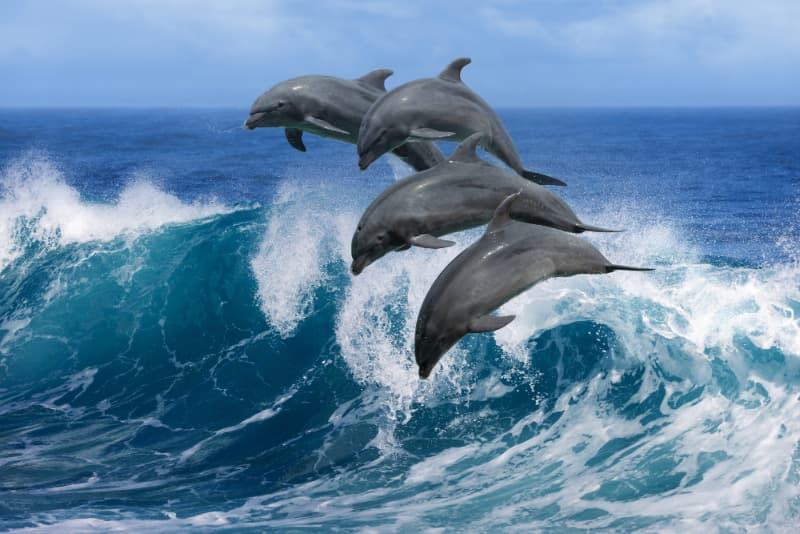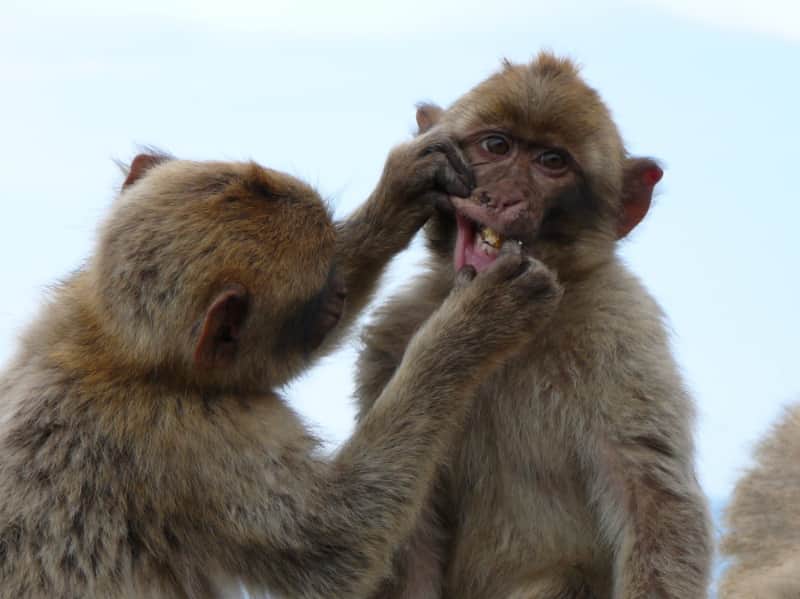
Maintaining a competitive edge lies at the heart of any successful business. Finding that edge requires creative thinking, maybe even looking at your business from an entirely different perspective. For instance, what could nature, as a source of inspiration, lead us to.
As humans, we are a bit of an odd species. We appear eager to learn and adopt new tools and strategies, at least from a broader level. However, when it comes down to things closer to home such as our daily routines, how we do business, the strategies our businesses adopt, etc, we often appear reticent to change, sometimes, myopic even. The reasons can be many; oftentimes it’s fear, uncertainty and doubt that inhibit us. Other times it’s complacency, or ego telling us that we are right and everyone else is wrong or doesn’t understand.
Those who can break free of these thinking and behavioural patterns, stand to benefit immensely, especially in the business environment we operate in presently - one dominated by change and uncertainty. To help with this process, all many business people need is a catalyst, a way to look at things differently for a change. In this article we suggest looking at how nature adapts and how species succeed even under the most adverse of conditions, as a source of inspiration for change.
If you study nature for any length of time, you’ll realise nature is based on competition and cooperation, just the same as business. Nature also seems to have a fundamental tenet - survival of the fittest, which links the two. Eventually, a degree of order and sophistication arises with the various ecosystems, from which we perceive evolving intelligence.
 Within such systems, lie patterns which manifest everywhere. Patterns may be mathematical, as in the golden ratio and fibonacci series, or in the cycles of life and death, or success and failure. An outcome of nature's evolutionary processes and patterns is symbiosis, an interactive process between often different species which has taken aeons to perfect. One finds symbiotic relationships at work wherever you look. Through these, nature shows us how to be successful, and most importantly, how to remain successful. Set aside egos long enough, and one realises that nature shows us what happens if we take situations and circumstances for granted too. Yet in business as well as our personal lives, we seem to ignore much of this.
Within such systems, lie patterns which manifest everywhere. Patterns may be mathematical, as in the golden ratio and fibonacci series, or in the cycles of life and death, or success and failure. An outcome of nature's evolutionary processes and patterns is symbiosis, an interactive process between often different species which has taken aeons to perfect. One finds symbiotic relationships at work wherever you look. Through these, nature shows us how to be successful, and most importantly, how to remain successful. Set aside egos long enough, and one realises that nature shows us what happens if we take situations and circumstances for granted too. Yet in business as well as our personal lives, we seem to ignore much of this.
If we take the time to look more closely at nature’s lessons, what strategies can we apply that may make our businesses more successful? One very obvious aspect of nature’s ‘growth’ strategy is that it usually only makes small adjustments over long periods of time. Obviously, we don't have aeons, so this approach could apply to business by simply compressing timescales and increasing the frequency of the adjustments.
Let’s look a little closer through nature's ‘lens' and see how the lessons from nature's mechanisms of competition and cooperation could apply in business.
We face competition in just about everything we do in our natural lives. For instance, in order to put food on our plates, we need an income. That might mean competing for a job, or for the poorest, a life on the streets. Either way, there are others in the same position as you with the same needs from the same environment. In business, we need clients for our products and services, so do our industry competitors. Internally in a business, departments may compete over budgets, as finance is invariably limited. Businesses need skilled personnel resources, these too, will be fought for through recruitment campaigns competing against other companies needing the same skilled people. So what can nature teach us about competition?
In nature, competition is especially fierce, it truly does come down to the survival of the fittest. However, fitness doesn’t just mean health, it questions whether a species is fit for the environment it is intended to inhabit, and has all the attributes needed to do so; be that a plant competing for light or a gazelle trying to outrun a lion. Each exploits its own inbuilt competitive features. If it fails to do this it may begin to evolve and use different tactics. Some, though, eventually become extinct.  The natural world is filled with skilled hunters.
The natural world is filled with skilled hunters.
Such hunters either use intelligence, stealth and speed to outwit and overcome their prey, or succeed through sheer strength or overwhelming numbers. Equally, there are many species that succeed by trying to avoid contact with their natural predators all together. These species have developed sophisticated methods that enable them to avoid detection while still succeeding as a species.
In the business world this translates to superior business intelligence, speed in decision making, financial strength and the ability to control or ‘manipulate’ how your competitors perceive your strengths and positioning.
Where strategy is concerned, some firms get too used to working from the same old play book, to the point where they have become complacent. We saw this during the Covid epidemic. Many businesses were stuck with limited routes to market or found it difficult to adapt to remote working. In the natural world, this might equate to a drought or excessive monsoon, or the demise of a food source through disease. Nature, though, invariably finds creative ways to adapt, and we learn things about species we never knew before simply because of a stress response we’ve never or seldom seen before. If one takes time to think laterally about business strategy, an adjustment or even a fresh approach might be discovered. 
As a suggestion, why not take time out and consider your business environment from a different perspective, as set out here? What type of animal is your business and do you operate in an ocean of diversity, a jungle of hidden opportunity and threats, or a desert where only hardened species survive? How might you adjust your strategies to mimic those successfully demonstrated in nature, using the tools you have available today. Don’t know how? We can probably help by challenging your thinking in such ways.
As often happens, some in the audience when this type of idea is presented, roll their eyes. You can almost hear their thoughts: “Oh, that old chestnut - what animal are you?”, or “Cliched, thinking”. Alas, these are the thoughts of business people with a myopic approach, not just to business, but also often with life. Essentially, not embracing such concepts in thinking is akin to accusing nature of being cliched. Open your minds, step out of the comfortable confines of your daily routines, break with complacency. Evolve!
When harmony exists between two parties reliant on one another through a symbiotic process, it’s usually extremely beneficial to both. If it becomes one sided, the relationship usually dies, sometimes quite spectacularly. As business people, establishing a symbiotic relationship between ourselves, suppliers and our clients should be our number one goal, as from this comes prosperity for all sides.
 Consider business supply chains. For many businesses, a stable and mutually beneficial supply chain is absolutely critical to success. For firms reliant on a ‘just-in-time’ approach to business, complete trust in their suppliers' abilities to deliver on time is critical to product deliveries and cash flow.
Consider business supply chains. For many businesses, a stable and mutually beneficial supply chain is absolutely critical to success. For firms reliant on a ‘just-in-time’ approach to business, complete trust in their suppliers' abilities to deliver on time is critical to product deliveries and cash flow.
It can be easy for some companies to view supply chains and client relationships as commodity items, especially where there is a choice of suppliers, or even a broad base of customers, as in retail. This is a mistake. Eventually, taking either of these aspects of business for granted will lead to a gradual demise. For instance, suppliers who are continually traded off against each other on the basis of price, will get tired of the tactics and may even stop bidding, worse, they may even begin colluding against you. Clients who feel they are not listened to or don’t see products evolving in line with their or overall marketing trends, will look somewhere else, or worse, make others aware of this through social media. In short, your business’s brand will become tired and unattractive and may get a bad reputation.
Symbiotic relationships in nature invariably centre around giving back in return for a task or service. Plants produce flowers to attract birds and insects and help spread their pollen, but in return provide nectar. Have you ever wondered how a plant ‘knows’ that birds and insects like nectar? Where business relationships are concerned, our first thoughts should be how we can benefit those we rely upon; what can we do to help them, other than to buy from them or sell to them?
Where business relationships are concerned, our first thoughts should be how we can benefit those we rely upon; what can we do to help them, other than to buy from them or sell to them?
For instance, as a supplier, having a client that buys consistently from them at sustainable prices, is immensely valuable. Working on ways to increase the symbiosis between elements of a supply chain, helps protect both supplier and consumer. All too often though, companies buy and don’t give enough thought to the supplier, price and delivery are the priority. Even companies that recognise this by appointing ‘strategic suppliers’, still don’t give enough consideration to the needs of the supplier, believing the ‘strategic’ label imbues some magical status, only to realise that there are many ‘strategic suppliers’.
When considering clients, businesses often use loyalty programs as ways to give back. The question is though, is this really creating a symbiotic relationship? In other words, is the customer actually benefiting in a real way from the reward? More often loyalty programs mean more sales for the business, but little value in real terms to the customers. A true symbiotic relationship is one where the quality of life, or business, is enhanced for both parties, equally.
 So, instead of old fashioned rewards and loyalty programs, perhaps consider how products and processes can evolve to become more in tune with customers and suppliers. For instance, tailoring a buying experience to an individual rather than to a market as a whole, makes the client feel much more valued - which from a psychological perspective may be all that a client needs as part of the symbiosis. One key to building experiential buying processes is through the use of technologies such as artificial intelligence and augmented or extended reality. These enable clients to interact with your brand, products and services in ways they have never experienced before and that allow them to feel more a part of the buying process other than just parting with cash - such is the human condition - people like to buy, but they don’t like to be sold to.
So, instead of old fashioned rewards and loyalty programs, perhaps consider how products and processes can evolve to become more in tune with customers and suppliers. For instance, tailoring a buying experience to an individual rather than to a market as a whole, makes the client feel much more valued - which from a psychological perspective may be all that a client needs as part of the symbiosis. One key to building experiential buying processes is through the use of technologies such as artificial intelligence and augmented or extended reality. These enable clients to interact with your brand, products and services in ways they have never experienced before and that allow them to feel more a part of the buying process other than just parting with cash - such is the human condition - people like to buy, but they don’t like to be sold to.
Successful brands become part of somebody’s daily life, not because they have become addicted to a product, but because it benefits them in some way. One might consider a trip to a coffee shop as a need to satisfy a craving for caffeine, but often people go to a coffee shop to socialise or work, so in many respects, the coffee is secondary to the experience they actually crave - interaction with others.
 Understanding a customer’s real ‘intent’ is fundamental to offering a product or service that actually benefits them and one that becomes the basis of a symbiotic relationship that stands the test of time. It’s an issue of such importance that companies like Google have invested billions into AI, so that they can better understand and interpret a search user's intentions - i.e. what is it they are really searching for?
Understanding a customer’s real ‘intent’ is fundamental to offering a product or service that actually benefits them and one that becomes the basis of a symbiotic relationship that stands the test of time. It’s an issue of such importance that companies like Google have invested billions into AI, so that they can better understand and interpret a search user's intentions - i.e. what is it they are really searching for?
Being able to change, adapt and evolve, will have to be central to any business’s long term strategy. The ability to think outside the box on a regular basis, will challenge the way the company works. The willingness to consider audacious changes to strategy and products will separate those who truly succeed and those that merely exist.
Altruism is a form of cooperation, but one that warrants serious consideration as a source of inspiration for new business strategy ideas. Search around and you’ll find many examples in nature where one party gives up something to another in a selfless manner, such as in the world of monkeys. This happens within species and between species. The intent is to ensure the survival of the other and thereby benefit the group or species as a whole.
 Examples in business often centre on social good. However, in ‘for-profit’ companies this is usually fine unless it impacts the bottom line. Many businesses make charitable donations, which are of course altruistic in nature, although often this is purely a mechanism to lower tax liabilities, so in many ways this is a somewhat cynical and hypocritical application of altruism. Truly altruistic businesses act without expecting a return, simply believing that serving the greater good will benefit all.
Examples in business often centre on social good. However, in ‘for-profit’ companies this is usually fine unless it impacts the bottom line. Many businesses make charitable donations, which are of course altruistic in nature, although often this is purely a mechanism to lower tax liabilities, so in many ways this is a somewhat cynical and hypocritical application of altruism. Truly altruistic businesses act without expecting a return, simply believing that serving the greater good will benefit all.
One way businesses can act altruistically but still balance the need to manage the bottom line is by promoting and adopting an altruistic attitude within the company’s stakeholders, most importantly, its employees. Allow employees time to come up with ways to help other elements within your business model. Suitably motivated and inspired by the impact their actions can have on others, employees can transform your business in ways you may never have expected. Simply thinking about how your business operates, in an altruistic light, or how it could transform in such a way, could lead to more transformative strategies better suited to future success.
Audacious changes to a company’s business plan may be an idea far removed from day-to-day reality. However, the reality is that change is accelerating - on all fronts. The sooner businesses are prepared to consider fundamental changes to their business plans, because they are looking further into the future and can see what such change means to them, the better.
Often, the main barrier to doing this is that there’s no real internal champion for such change. There may be too many conflicting beliefs, attitudes, and agendas; essentially, personal egos and self-centred thinking. Change is often discussed in companies, of that there’s no doubt, but agreeing and implementing a course of change is a wholly different proposition. Often, just by reframing the scenarios a business faces, in terms of opportunities and outcomes, can be like the pebble that starts an avalanche, but in this case an avalanche of enthusiasm and commitment to pursue an idea or direction. Sometimes, that pebble must originate from outside the business.
Reach out to us and arrange a short introductory call free of charge.
Use the form below or:
Call on: 0207 112 9130
Email: dontpanic@adjustmentagency.co.uk